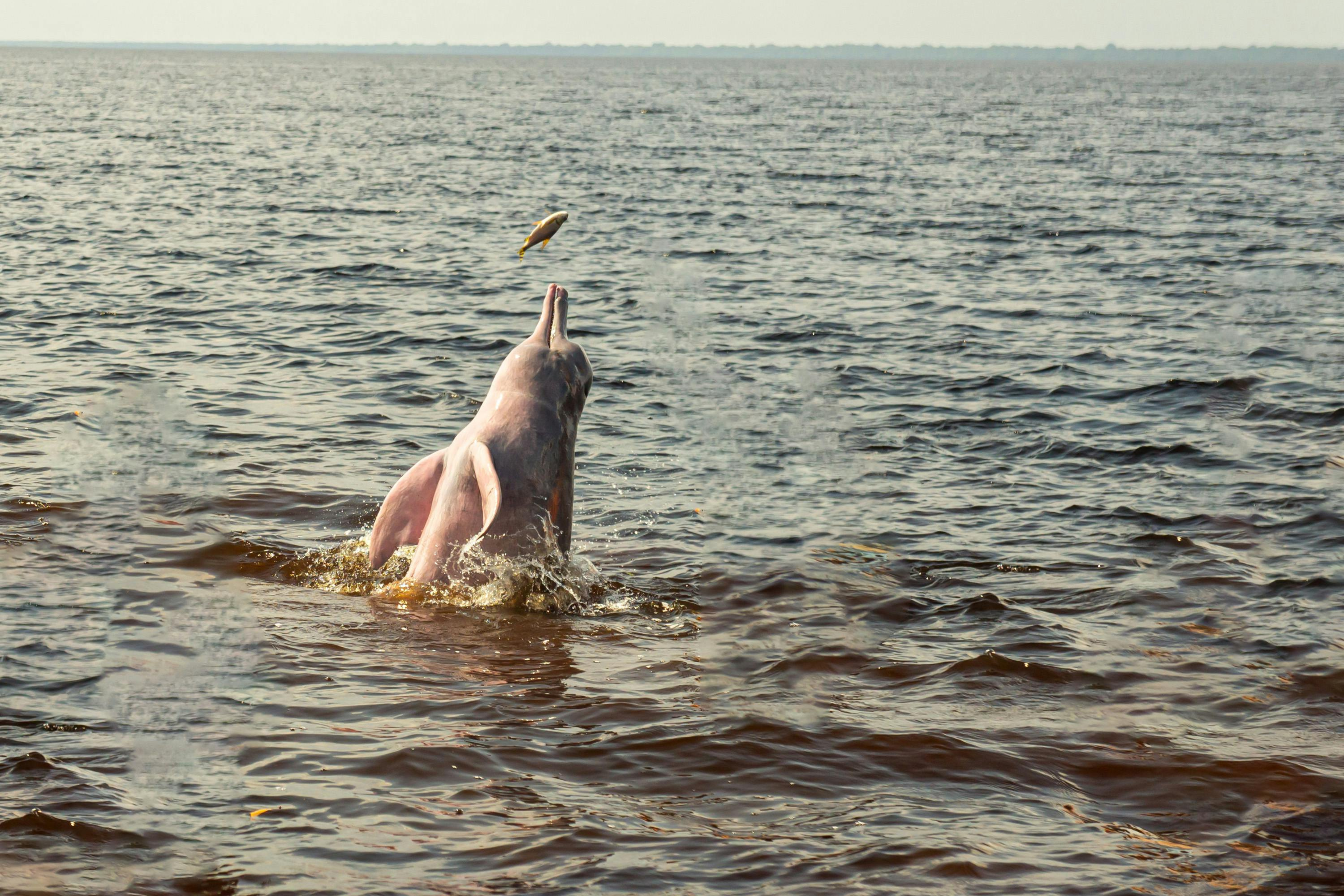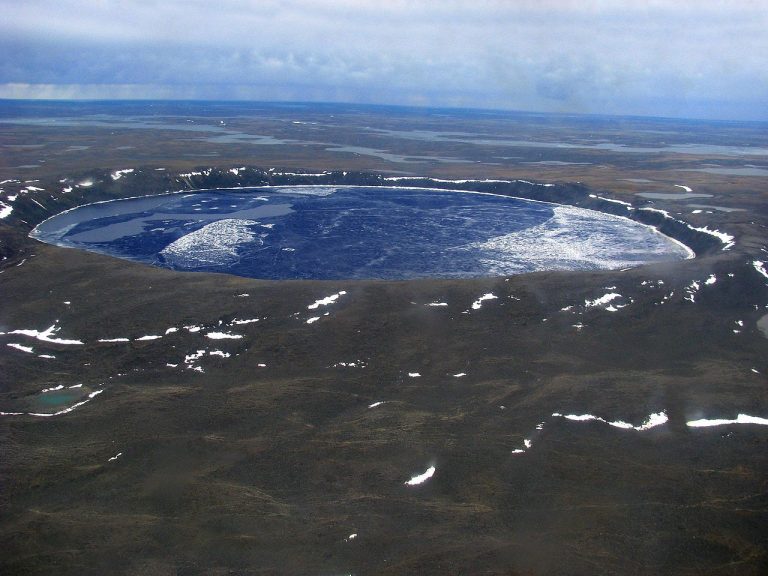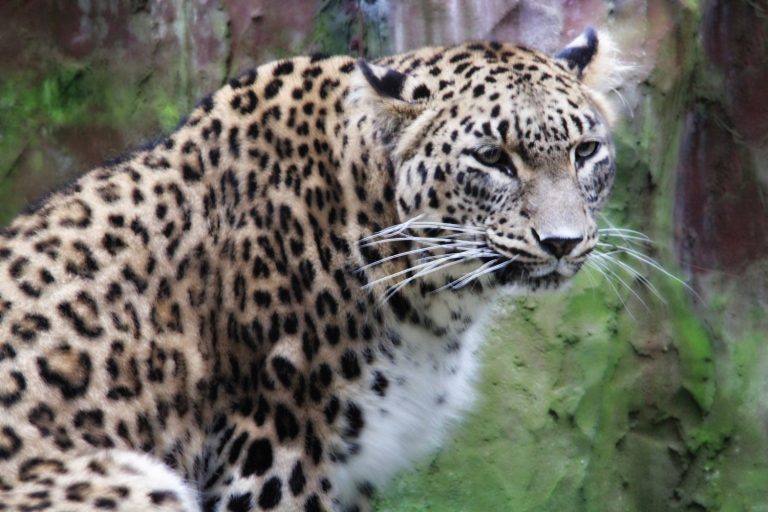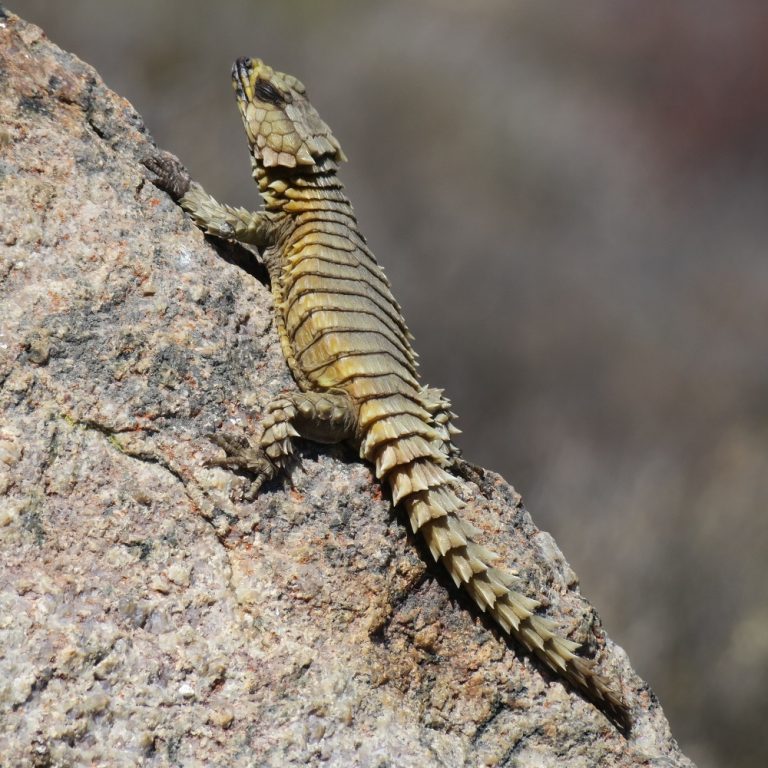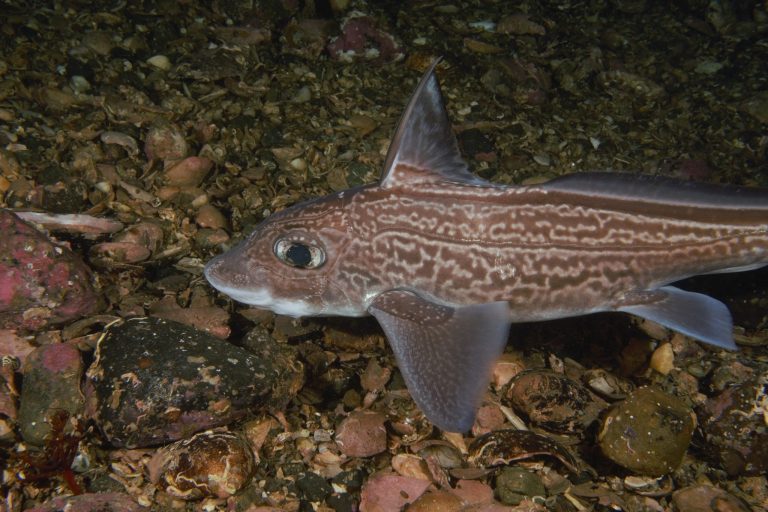A Glimpse into the World of Amazon Pink River Dolphin
You may assume dolphins are exclusively marine animals, but there are species of dolphin that inhabit freshwater ecosystems in different regions of the world too.
The Amazon pink river dolphin, known scientifically as Inia geoffrensis, is such a river dolphin that lives in the murky waters of the Amazon and Orinoco river basins of South America.
Often called Boto, this species is the largest freshwater dolphin in the world and an important part of the Amazon ecosystem.
In this post, we will explore the habitat, characteristics, behaviors, conservation status, and cultural importance of the Amazon pink river dolphin, and why this lovely animal needs our attention and protection.
What is the Amazon Pink River Dolphin?
Let’s start by learning some basic facts about this enigmatic creature.
Definition and Scientific Classification
The Amazon pink river dolphin belongs to the family Iniidae and bears the scientific name Inia geoffrensis.
This river dolphin is different from its marine relatives due to its adaptations to survive in freshwater.
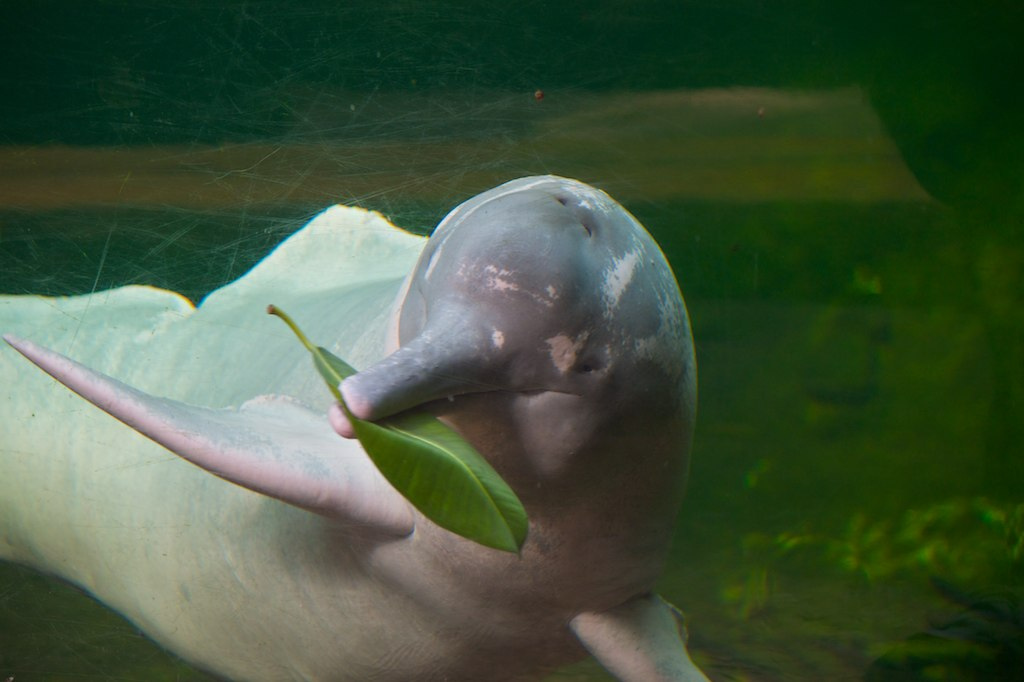
Common Names
The Amazon pink river dolphin has several common names, including:
- Amazon river dolphin
- Boto
- Pink dolphin
Physical Characteristics
Its unique pink complexion is one of the most prominent features that sets Amazon pink river dolphins apart.
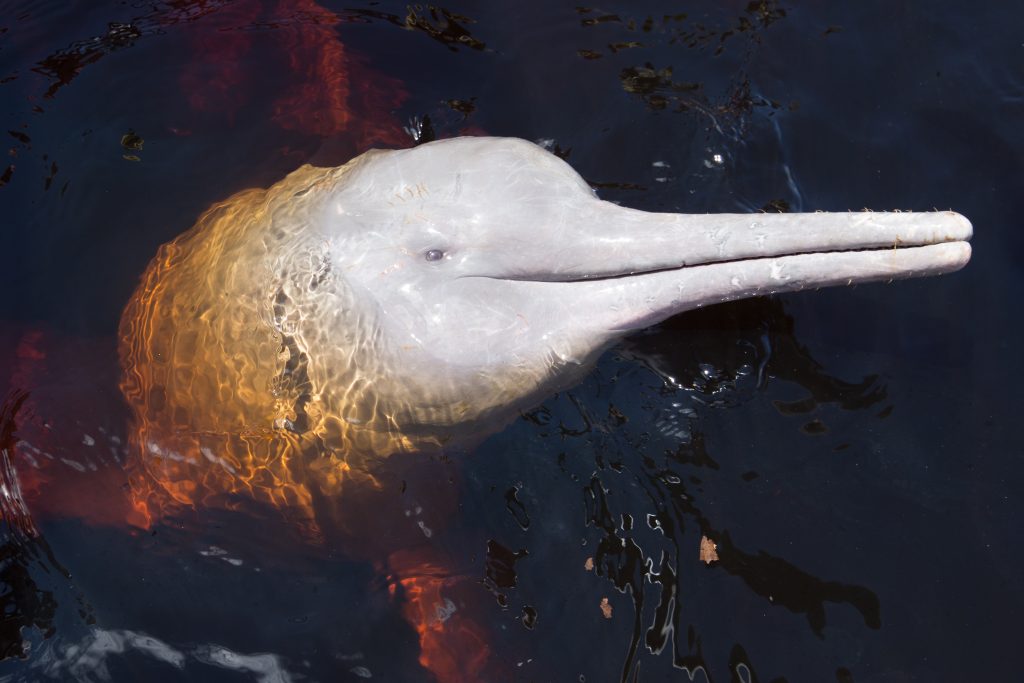
The newborns of this species have a grayish color which gradually transforms into a pink, varying from light pink to a bright rosy color.
Water quality, temperature, and emotional states can affect this coloration, and these dolphins display a brighter pink when they are excited or agitated.
Adult male pink river dolphins can reach lengths of up to 9 feet and weigh around 400 pounds.
Females are typically smaller, weighing about 220 pounds on average.
They possess certain body structures their marine cousins don’t, a flexible neck that allows them to find their way through the complex underwater environment of the Amazon basin, and paddle-like flippers that give them agility in shallow waters.
Habitat and Distribution of Amazon Pink River Dolphin
Now let’s look into where the pink river dolphins are naturally found.
The Amazon River and Its Tributaries
It’s the massive network of freshwater ecosystems that consists of the Amazon River and its tributaries and includes flooded forests, lakes, and wetlands that serve as the primary habitat for the pink river dolphin.
Geographic Range
The geographic range where the Amazon pink river dolphin occurs is a vast area that spans several countries like Brazil, Bolivia, Ecuador, Venezuela, Colombia, Guyana, and Peru, bearing evidence of its ability to adapt to diverse freshwater habitats.
Characteristics of the Pink River Dolphin’s Habitat
The most significant characteristic of the freshwater habitat of the Amazon pink river dolphin is its murky waters.
That makes it difficult to see underwater but provides good hunting opportunities.
These dolphins have evolved to use echolocation to find their way and hunt in these opaque waters.
Behavior and Social Structure of The Pink River Dolphin
So, do pink river dolphins behave like their relatives in the ocean?
Are they the same playful, sociable creatures that often engage in friendly interaction with humans?
Let’s find out:
Social Behavior and Pod Dynamics
Amazon pink river dolphins are social animals and often form small groups or pods.
However, there’s a solitary nature to them too, as they are frequently observed to swim alone or in pairs.
Their social interactions become very apparent when they hunt, launching coordinated attacks on prey with pod members communicating and cooperating.
Another thing that highlights their social behavior is the way they take care of their young.
The mothers form deep bonds with their calves, protecting them, nursing them, and guiding them toward food.
Also, older members of the pods, male and female both, have been observed to help the mothers to look after their calves.
All these tell us that pink river dolphins are intelligent and emotional creatures.
How Do Pink Dolphins Communicate?
Amazon river dolphins are excellent communicators.
They communicate with one another using various click sounds, whistles, and body language.
Their ability to make these sounds is essential for navigating and interacting with their kind, particularly in the dense, turbid waters of the Amazon.
Echolocation and Vocalizations
Echolocation is the ability to produce high-frequency sounds and use the echo to make sense of the surrounding environment, something very handy in an underwater environment with low visibility.
Amazon pink river dolphins produce high-frequency clicks ranging from 40 to 150kHz and identify the shape, size, and distance of the objects in their surroundings by interpreting those sounds bouncing off them.
They use this ability to avoid obstacles in their path, catch prey, and interact socially with one another.
Playful Nature and Interactions with Humans

It’s well-documented that Amazon Pink River Dolphins are playful and tend to interact with humans, like their ocean counterparts.
They are known to approach boats and engage in playful behaviors.
Diet and Feeding Habits
Now let’s look into what these freshwater dolphins eat and how they go about finding food.
Types of Prey and Feeding Strategies
Amazon pink river dolphins are predators.
Their varied diet mainly consists of fish, crustaceans, and occasionally small turtles.
It’s known that they consume more than 50 different species of fish, which shows that they are highly adaptable and resourceful in hunting.
Their feeding strategies are diverse.
They use echolocation to find prey hiding among aquatic plants.
By sending out high-frequency clicks and sensing their echoes, they detect the size, shape, and distance of their prey.
They can grasp slippery fish and crack the hard shells of crustaceans open with their specialized teeth.
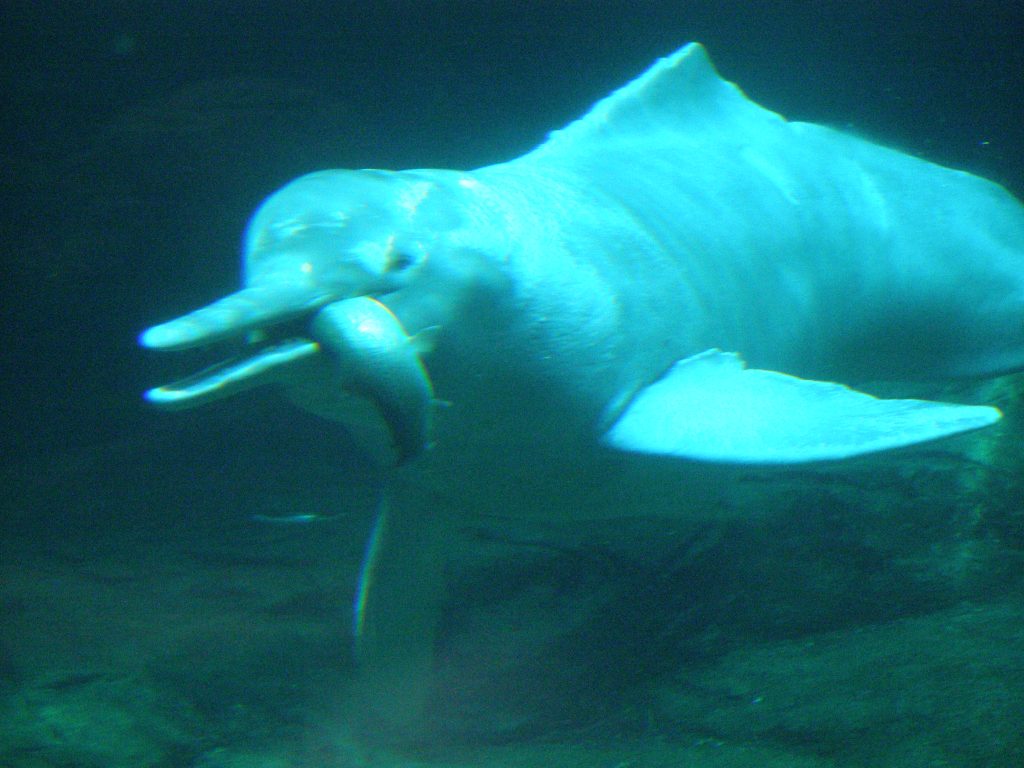
They also have long, slender beaks they can use to reach into narrow nooks and crevices to catch or flush out hidden prey.
Unlike their ocean relatives, they can turn their necks nearly 90 degrees in many directions.
This flexible neck helps them search their surroundings for food and obstacles.
They are known to herd fish together to catch them easily, working together by using their high-frequency clicks and other vocalizations to signal one another and interpret one another’s body language and movements.
Intelligence and Cognition
Everybody knows dolphin species found in the ocean are intelligent, right?
Turns out, Amazon pink river dolphins are too.
Brain Size and Intelligence
They are considered among the most intelligent of all dolphin species.
Their brain size compared to body size is approximately 40% larger than that of humans.
This large brain size is tied to their advanced intellect.
Problem-Solving Abilities and Learning Capacity
Amazon pink river dolphin’s problem-solving and learning abilities are unique compared to other dolphin species.
A classic example of their problem-solving skills is how they herd fish into tight masses, using excellent communication and coordinating one another’s movements, finding a solution for the problem of finding enough food for the pod.
Their learning capacity is evident in their playful behavior, throwing objects around and chasing after one another.
This shows that they learn to manipulate their environment by experimenting with various objects, a learning behavior known as object manipulation.
This comes in handy in learning to hunt and acquire social skills.
They also learn by observing others of their kind.
For example, young pink dolphins learn to hunt and interact socially by watching their mothers and other adults, a learning behavior known as social learning.
Their ability to communicate with different vocalizations and body language is another example of their intelligence.
Evidence of Emotional Depth and Social Bonds
Researchers continue to study the emotional depth of the Amazon pink dolphin.
Based on the observations, these dolphins show empathy, often helping injured or sick members of their kind.
Their playful nature tells us about their emotional capacity too.
It shows that they are capable of expressing joy.
Conservation Status
So, how do pink river dolphins fare in the wild?
Unfortunately, not so well.
Current Population Estimates and Threats to Survival
The Amazon pink river dolphin’s conservation status is currently classified as endangered.
Estimates of their population show a significant decline due to human activity.
Habitat destruction, pollution, and improper fishing practices are among the most serious threats to the stability of their population.
Deforestation, industrial pollution, and overfishing have severely affected the sensitive ecosystems of the Amazon River.
This not only reduces the availability of prey but also compromises the pink dolphins’ habitat, putting their population in decline.
Implications of Population Decline
Being apex predators, Amazon river dolphins keep populations of fishes and other aquatic animals in check, helping to maintain the balance of the Amazon river ecosystem.
So, the decline of their population can lead to overpopulation of their prey species, toppling the balance of these habitats.
It can also impact the indigenous people whose culture and folklore have a very special place for this river dolphin.
Conservation Efforts and Protective Measures
Conservation organizations and local governments are actively working to protect the Amazon pink river dolphin.
Habitat restoration, fishing regulations, and public awareness programs to promote sustainable practices in the region are among the initiatives to protect this important animal.
Myths and Legends Surrounding the Pink River Dolphin
The Amazon pink river dolphin has an important place in local folklore.
Indigenous people often associate it with mystical powers and legends.
They consider these dolphins magical beings who can transform into humans and have protective qualities.
For many indigenous communities, the pink river dolphin symbolizes the connection between nature and humans.
These cultures hold ceremonies and rituals to honor the dolphins, showing their respect for this species and the important role it plays in the ecosystem.
Conclusion
Amazon Pink River Dolphin is a species of freshwater dolphin that inhabits the Amazon and Orinoco river basins.
Standing out with their pink coloration, they are intelligent and emotional animals that evolved to thrive in the murky and cluttered waters of the region.
Being apex predators, they help maintain the balance of the delicate ecosystems they inhabit.
They have a special place in the culture of Indigenous people who believe they are magical creatures with protective power.
Human activity has put their population in decline, and various conservation measures have been put into practice.

